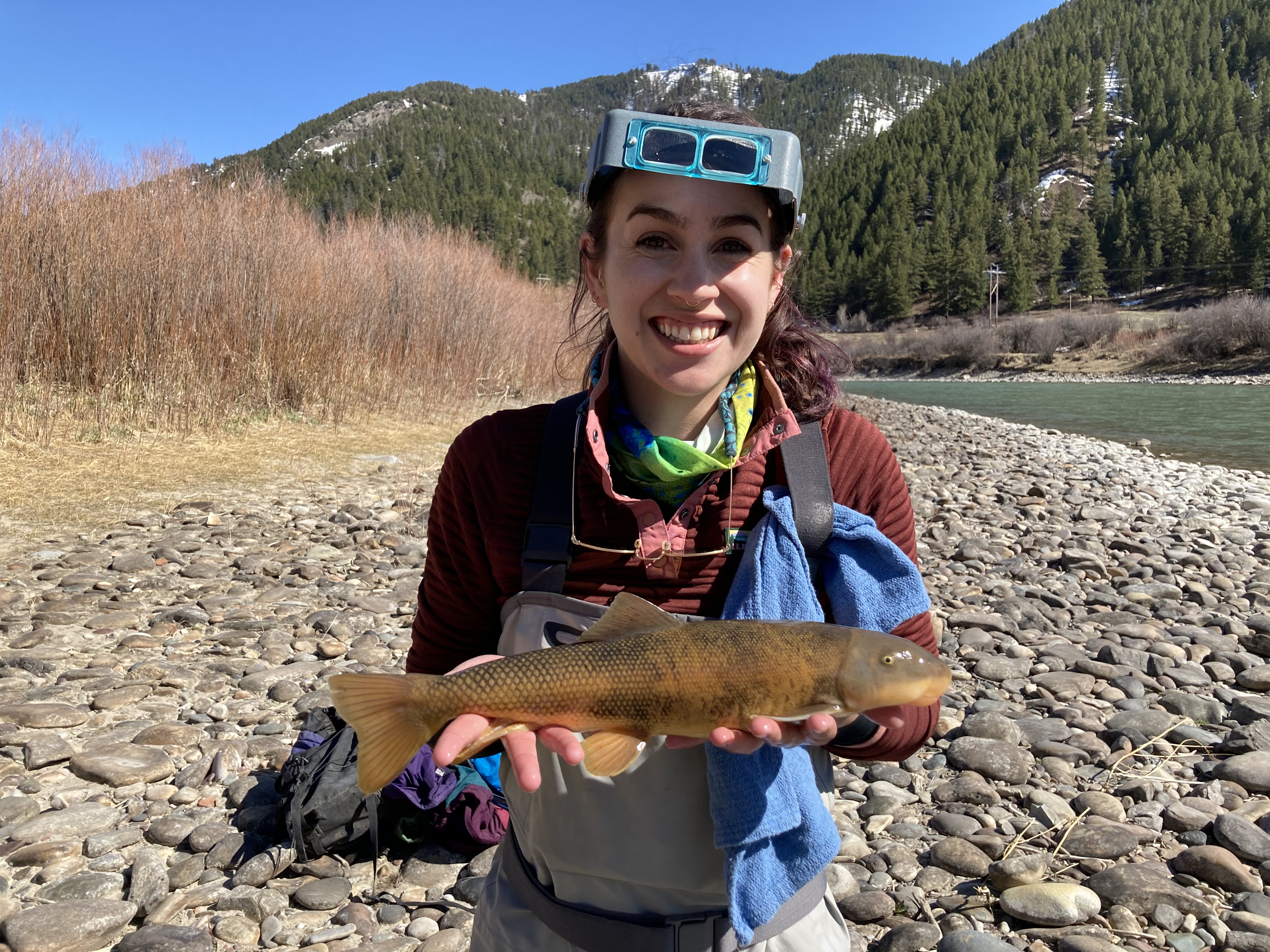Mistaken Identity: Researchers Develop New Methods to Identify Suckers in the Intermountain West
July 28, 2025

To most anglers, a ‘sucker’ is the last fish they want to see on the end of their line. But to the scientists who study these bottom-dwelling fish for their research, knowing exactly which species of sucker they’ve netted offers a window into the health of the ecosystem these animals occupy. Now, two Idaho State University professors and their students have developed a new process to precisely identify the species that call southeast Idaho and some of the surrounding areas home.
Over the last decade, Ernest Keeley and Janet Loxterman, professors in the biological sciences department at ISU, and their students, Brandy Smith and Tyson Hallbert, gathered data on the species of suckers living in the upper Snake River, Bonneville Basin and Colorado River. One species, the bluehead sucker was thought to be found in all three watersheds, however, a previous study from 2014 indicated that a different but very similar looking species of sucker was present in the upper Snake River and waters of the nearby Bonneville Basin, such as the Bear River.
“The original idea for our study arose when ISU students were out on a field trip collecting fish for a biology class and it became apparent that some of the suckers species were difficult to tell apart,” said Keeley, an expert in fish ecology. “So that led to the idea that someone should study it to figure out how to distinguish which fish species they were.”
Detailed recently in the North American Journal of Fisheries Management, their work saw Keeley, Loxterman, and their students collect as many as 30 fish from more than two dozen sites at rivers and streams in Idaho, Wyoming and Utah. After catching the suckers, the fish would first be anesthetized and weighed. Then, the researchers would take a photo of the fish and collect a small tissue sample from the sucker’s pelvic fin for genetic testing. The process took about five minutes, and the scientists returned the fish alive to the water.
Back on ISU’s campus in Pocatello, the students collected detailed measurements from the photos of the suckers–633 in total–noting 24 individual measurements of everything from the length and width of different fins and the number of scales along their lateral line–a system of sensory organs embedded in the fish’s scales–to head and body depth and more on each fish. They also extracted the DNA from the fin samples they collected for sequencing at ISU’s Molecular Research Core Facility and the Idaho Department of Fish and Game’s Eagle Genetics Laboratory. After the scientists got the sequencing data back, it showed there may have been some cases of misidentification of which sucker species were where over the years.
“The green sucker in the Upper Snake River and Bonneville Basin watersheds were thought to be the same species as the bluehead sucker that is found in the Colorado River watershed, partly because they look very similar,” explained Keeley. “When we examined the DNA sequence data, they were found to be quite different, except that mountain suckers were then found to be the same as bluehead suckers by sequence data, further confusing the story. It took a larger sampling of each species' genome to confirm that they were three separate species of suckers in all the watersheds.”
“I found this project exciting and fulfilling because I grew up near the Portneuf River in Idaho,” said Brandy Smith, who now serves as an environmental scientist in the Restoration Ecology Unit at the California Department of Water Resources. “I remember being amazed the first time I encountered a green sucker because I had no idea something so unique and cryptic lived in my local river. I loved exploring their diversity and hope that this effort can contribute to the conservation of this remarkable native fish.”
Pairing the suckers’ genetic data with their measured physical traits, researchers were then able to determine which measurements are best suited to spot which fish is which.
“Of the 24 measurements, we found the number of lateral line scales, dorsal and pectoral fin lengths, head length and depth, depth of the caudal peduncle–the part of a fish between their tail fin and body–and their eye diameter were the best physical measurements to use to determine the three sucker species,” Keeley said.
“This study shows that there is still a lot to learn about the diversity of fishes and biodiversity in general,” said Tyson Hallbert, postdoctoral scholar with the Center for Watershed Sciences at the University of California, Davis. “The project was a large multi-year effort led by Brandy Smith, and it was great to see her excitement as the multiple data types all pointed in the same direction. Her enthusiasm for the often overlooked fishes and the process of uncovering their relatedness and identifying characteristics was amazing.”
These new results build upon similar research by Keeley with cutthroat trout completed in 2021. Being able to more accurately and quickly determine which species of fish are where and in what numbers allows ecologists to make more informed decisions related to where the species are found and whether their populations are healthy, said Keeley.
“Some species of suckers are found only within Idaho or a few surrounding states and nowhere else in the world, so, if they are lost here, the species is lost forever,” said Keeley. “In rivers, when native species are lost, invasive species like New Zealand mud snails, Asian carp, and others can take over and completely change the ecosystem in ways we don't like, leading to economic consequences because they are very expensive to control. If we protect the native species–including suckers–it means the ecosystem is more likely to function naturally into the future.”
For more information on Idaho State University’s Department of Biological Sciences, visit isu.edu/biology.
Prospective students can book a campus tour at isu.edu/visit/.
Categories:
College of Science and EngineeringGraduate SchoolResearchUniversity News

.JPG)
.JPG)